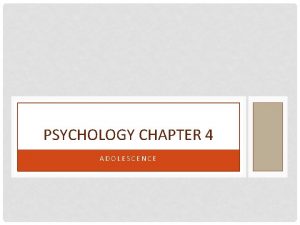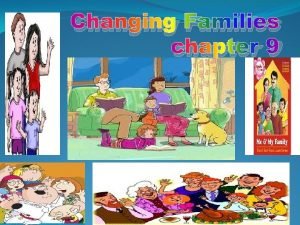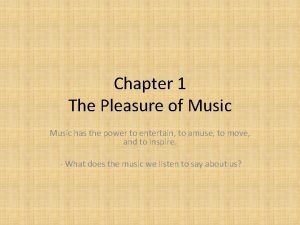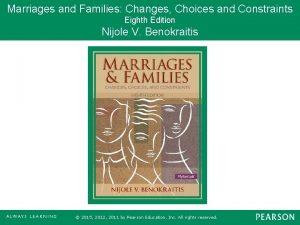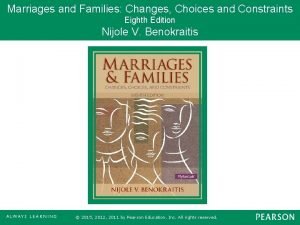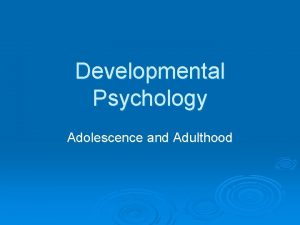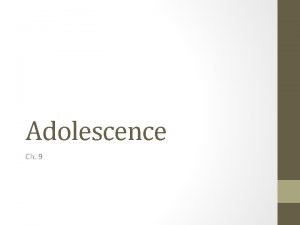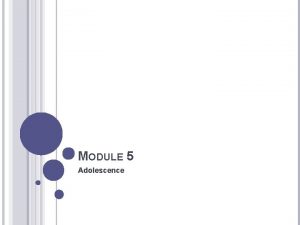Contemporary Adolescence Chapter 9 Adolescence and their Families











- Slides: 11

Contemporary Adolescence Chapter 9 Adolescence and their Families

A brief reminder of Systems Theory �Subsystems �Inter-relatedness of the subsystems �Homeostasis and morphogenesis

Changes in the system: Parent’s in midlife �Most in midlife perceive: • Decline in: �Energy �Health �Creativity �Physical attractiveness • But an increase in: �Wisdom �Competence �Psychological health �Respect from others

More about parental midlife �People tend to become more flexible in midlife �Contrary to popular culture, most parents handle the “empty nest” just fine �Parents that do undergo a period of life evaluation find their relationship with their adolescents are negatively affected by it

The Siblings �Caregiver relationship �Buddy relationship �Critical relationship �Rival relationship �Casual relationship

Parenting: What do adolescents want? �Connection • Interest and help • Listening and empathy • Love • Acceptance and approval �Trust �Autonomy • Enmeshed • Disengaged �Regulation

Regulation: Parenting Styles Demandingness Responsiveness �It High Low High Authoritative Permissive Low Authoritarian Disengaged is better to have one parent who is authoritative and one who is not that to have two of any other kind

Attachment Style �Secure • • • Feelings of competency Get along well with others Do well in school High self esteem Less likely to get in trouble and be depressed �Anxious �Avoidant

Conflict � Adolescents and parents generally agree on many of the most important aspects of their views of life � Adolescents typically love and care about their parents � Arguments generally concern minor issues � However, conflict with parents does rise sharply in early adolescence, remains high for several years, and declines in late adolescence

Sources of Conflict �Physically, adolescents become bigger �Increased ability to think critically �Sexual issues �Differences in outlook

Emerging adult relationship �Typically, relationships between parents and emerging adults improve �Emerging adults who move out tend to get along better with their parents than those that remain at home
 Big families vs small families
Big families vs small families Ttl and cmos logic families and their characteristics
Ttl and cmos logic families and their characteristics Chapter 10. western musical instruments
Chapter 10. western musical instruments Chapter 4 adolescence psychology
Chapter 4 adolescence psychology Chapter 4 adolescence psychology
Chapter 4 adolescence psychology Write reasons for the changes in families class 4
Write reasons for the changes in families class 4 Chapter 7 lesson 3 help for families
Chapter 7 lesson 3 help for families Compare and contrast the bach and marsalis families
Compare and contrast the bach and marsalis families Compare and contrast the bach and marsalis families
Compare and contrast the bach and marsalis families Family of orientation
Family of orientation Marriages and families changes choices and constraints
Marriages and families changes choices and constraints Prologue romeo and juliet meaning
Prologue romeo and juliet meaning



